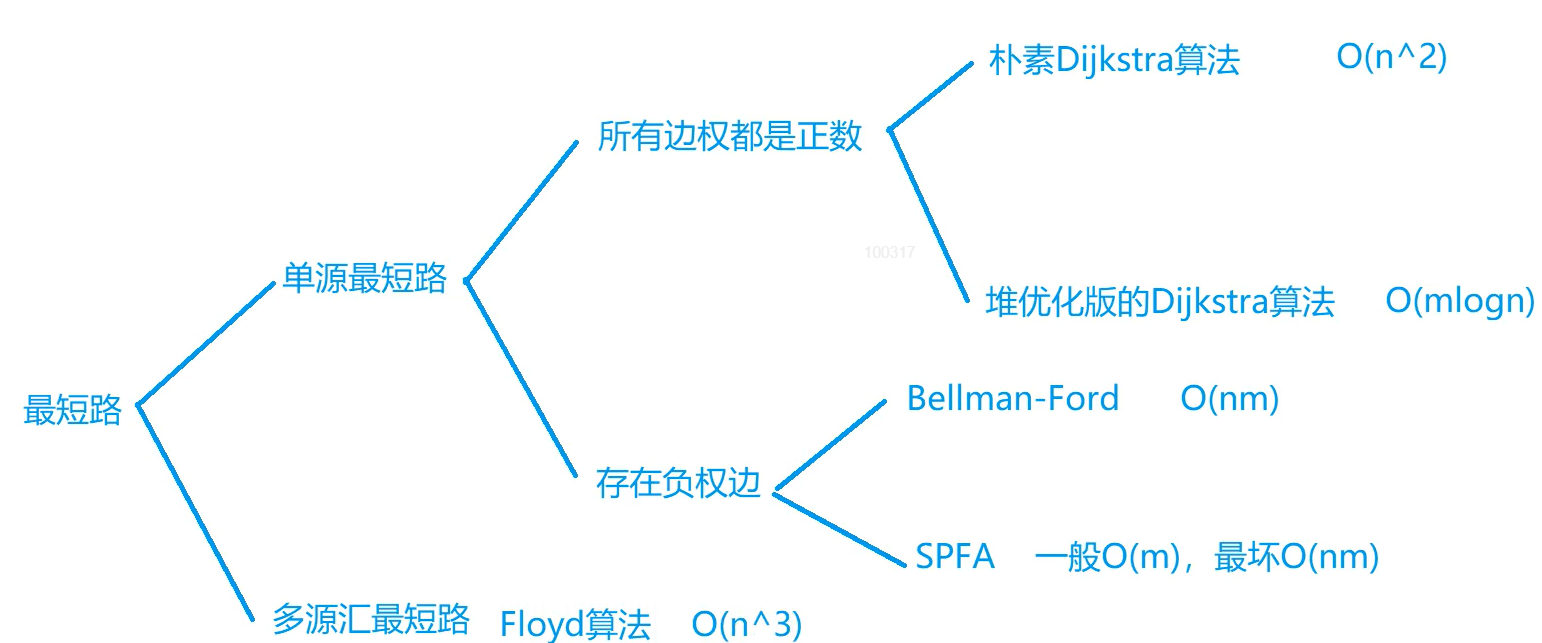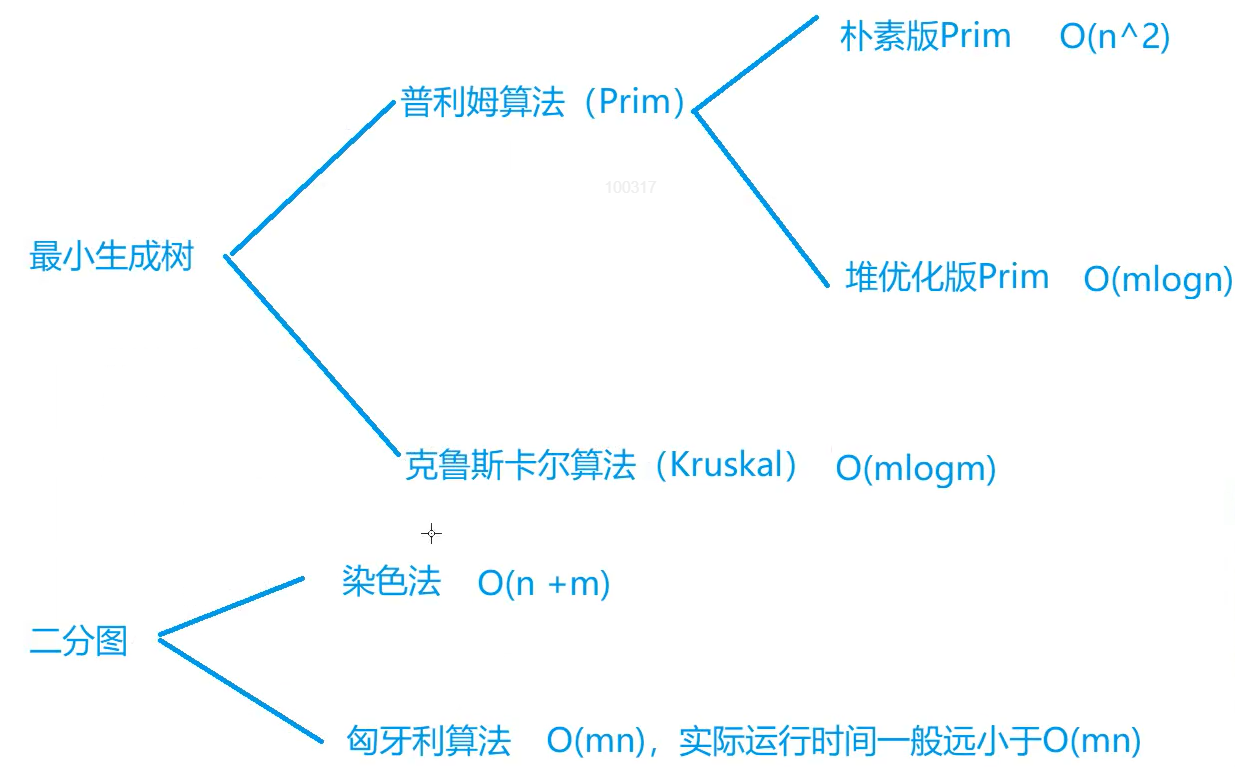DFS
842.排列数字
1 2 3 4 5 6 7 8 9 10 11 12 13 14 15 16 17 void dfs (int u) if (u > n){ for (int i=1 ; i<=n; i++) printf ("%d " , path[i]); printf ("\n" ); return ; } for (int i=1 ; i<=n; i++){ if (!st[i]){ st[i]=true ; path[u]=i; dfs (u+1 ); st[i]=false ; } } } dfs (1 );
843.n-皇后问题 对角线的表示最为巧妙
1 2 3 4 5 6 7 8 9 10 11 12 13 14 15 16 17 18 19 20 21 22 23 24 int path[N];void dfs (int u) if (u>=n){ for (int i=0 ; i<n; i++){ for (int j=0 ; j<n; j++){ if (path[i]==j) printf ("Q" ); else printf ("." ); } printf ("\n" ); } pritntf ("\n" ); } for (int i=0 ; i<n; i++){ if (!col[i]&&!dg[u+i]&&!ndg[u-i+n]){ col[i] = dg[u+i] = ndg[u-i+n] = 1 ; path[u] = i; dfs (u+1 ); col[i]= dg[i+u] = ndg[u-i+n] = 0 ; } } } dfs (0 );
BFS
844.走迷宫 坐标转化方面总出问题 合法性检测!
1 2 3 4 5 6 7 8 9 10 11 12 13 14 15 16 int q[N], head=0 , tail=-1 , d[N];q[++tail]=1 ; while (head<=tail){ int u = q[head++]; int xu = (u-1 )/m + 1 , yu = u - (xu-1 )*m; for (int i=0 ; i<4 ; i++){ int xx = xu + dx[i], yy = yu + dy[i]; int loc = (xx-1 )*m + yy; if (xx>m||xx<1 ||yy>m||yy<1 ) continue ; if (!d[loc]&&!map[xx][yy]){ q[++tail]=loc, d[loc]+=d[u]; } } } printf ("%d" , d[m*n]);
845.八数码
求最短路/最短距离->BFS
我的艰辛历程:字符哈希–结果没法逆回来×;头铁一定要纯C自己写队列×
string的API使用: ①string.find()
②这里必须使用二维坐标表示,一维错误
③t重复使用需要两次swap
④合法性检查
1 2 3 4 5 6 7 8 9 10 11 12 13 14 15 16 17 18 19 20 21 22 23 24 25 26 27 28 29 30 31 32 33 34 35 36 37 38 39 40 41 42 int bfs (string start) string end = "12345678x" ; queue<string> q; unordered_map<string, int > d; q.push (start); d[start] = 0 ; while (!q.empty ()){ auto t = q.front (); q.pop (); int dis = d[t]; if (t == end) return dis; int x = t.find ('x' ); int xx = x/3 , yy = x%3 ; int dx[4 ] = {0 , 0 , 1 , -1 }, dy[4 ] = {1 , -1 , 0 , 0 }; for (int i=0 ; i<4 ; i++){ int nx = xx + dx[i], ny = yy + dy[i]; if (nx<0 ||nx>2 ||ny<0 ||ny>2 ) continue ; swap (t[x], t[3 *nx+ny]); if (!d.count (t)){ d[t] = dis + 1 ; q.push (t); } swap (t[x], t[3 *nx+ny]); } } return -1 ; } int main () string start; for (int i=0 ; i<9 ; i++){ char t; cin>>t; start += t; } cout<<bfs (start)<<endl; }
树与图的深度优先遍历
存储结构
图:邻接矩阵(用的少),邻接表
树的DFS
🌺846.树的重心 (就目前我的水平来说整个代码都是重点–)
几个常犯错误: 1.memeset(h, -1, sizeof h) 2.st []使用:通常都会有
1 2 3 4 5 6 7 8 9 10 11 12 13 14 15 16 17 18 19 20 21 22 23 24 25 26 27 28 29 30 31 32 33 34 35 36 37 38 int h[N], e[N], ne[N], idx;bool st[N];int ans;void add (int a, int b) e[idx]=b, ne[idx]=h[a], h[a]=idx ++; } int dfs (int x) st[x] = true ; int sum = 1 , res = 0 ; for (int i=h[x]; i!=-1 ; i=ne[i]){ int u = e[i]; if (!st[u]){ int s = dfs (u); res = max (res, s); sum += s; } } res = max (res, n-sum); ans = min (ans, res); return sum; } int main () scanf ("%d" , &n); memset (h, -1 , sizeof h); for (int i=0 ; i<n; i++){ int a, b; scanf ("%d%d" , &a, &b); add (a, b), add (b, a); } dfs (1 ); return ans; }
图的BFS
847.图中点的层次 常犯错误:经常把idx给存到queue里
1 2 3 4 5 6 7 8 9 10 11 12 13 14 15 16 17 18 19 20 21 22 int q[N], tt, hh;int h[N], e[N], ne[N], idx;int d[N];memset (h, -1 , sizeof h);memeset (d, -1 , sizeof h);hh = 0 , tt = -1 ; q[++tt] = 1 ; d[1 ] = 0 ; while (hh <= tt){ int u = q[hh++]; for (int i=h[u]; i!=-1 ; i=ne[i]){ int t = e[i]; if (d[t]==-1 ){ q[++tt] = t; d[t] = d[u] + 1 ; } } } printf ("%d" , d[n]);a
拓扑序列
1.某种程度上的BFS; 2.抽屉原理证明有向无环图性质;
最短路问题
单源最短路
朴素Dijkstra
O(n^2)
🍉带佬说: 不能解决负权 是因为dijkstra要求每个点被确定后st[j] = true,dist[j]就是最短距离了,之后就不能再被更新了(一锤子买卖),而如果有负权边的话,那已经确定的点的dist[j]不一定是最短了。
1 2 3 4 5 6 7 8 9 10 11 12 13 14 15 16 17 18 int djikstra () memset (d, 0x3f , sizeof d); d[1 ] = 0 ; for (int i=0 ; i<n; i++){ int t = -1 ; for (int j=1 ; j<=n; j++){ if (!st[j]&&(t==-1 ||d[j]<d[t])) t=j; } st[t] = 1 ; for (int j=1 ; j<=n; j++){ if (d[j]>d[t]+g[t][j]) d[j]=d[t]+g[t][j]; } } if (d[n]==0x3f3f3f3f ) return -1 ; else return d[n]; }
堆优化Dijkstra
优先队列,O(mlogn)
1 2 3 4 5 6 7 8 9 10 11 12 13 14 15 16 17 18 19 20 21 22 23 24 25 26 27 28 29 typedef pair<int , int > PII;int h[N], w[N], e[N], ne[N], idx;int st[N], d[N];void dijkstra () memset (d, 0x3f , sizeof d); priority_queue<PII, vector<PII>, greater<PII>> q; q.push ({0 , 1 }); d[1 ]=0 ; while (!q.empty ()){ int t = q.top (), q.pop (); int ver = t.second; if (st[ver]) continue ; st[ver] = 1 ; for (int i=h[ver]; i!=-1 ; i=ne[i]){ int u = e[i], wt = w[i]; if (d[u]>d[ver]+wt){ d[u]=d[ver]+wt; q.push ({d[u], u}); } } if (d[n] == 0x3f3f3f3f ) return -1 ; else return d[n]; } }
Bellman-Ford
backup数组、struct结构体
1 2 3 4 5 6 7 8 9 10 11 12 13 14 15 16 17 18 19 20 21 22 int d[N], backup[N];struct Edge { int a, b, w; }edge[M]; void bellman_ford () memset (d, 0x3f , sizeof d); d[1 ] = 0 ; for (int i=0 ; i<k; i++){ memcpy (backup, d, sizeof d); for (int j=0 ; j<m; j++){ int a = edge[j].a, b = edge[j].b, wt = edge[j].w; if (d[b]>backup[a]+wt){ d[b] = backup[a] + wt; } } } if (d[n] > 0x3f3f3f3f / 2 ) puts ("impossible" ); else printf ("%d\n" , d[n]); }
🍅SPFA
1.st [N]数组
1 2 3 4 5 6 7 8 9 10 11 12 13 14 15 16 17 18 19 20 21 22 23 24 25 void spfa () memset (d, 0x3f , sizeof d); queue<int > q; q.push (1 ); d[1 ]=0 , st[1 ]=1 ; while (!q.empty ()){ int t = q.front (); q.pop (); st[t] = 0 ; for (int i=h[t]; i!=-1 ; i=ne[i]){ int u = e[i], wt = w[i]; if (d[u]>d[t]+wt){ d[u] = d[t] + wt; if (!st[u]){ st[u] = 1 ; q.push (u); } } } } if (d[n] == 0x3f3f3f3f ) puts ("impossible" ); else printf ("%d\n" , d[n]); }
852. spfa判断负环
cnt[N]代表含义为边数(不是节点数)
1 2 3 4 5 6 7 8 9 10 11 12 13 14 15 16 17 18 19 20 21 22 23 24 25 26 27 void spfa () queue<int > q; for (int i=1 ; i<=n; i++){ q.push (i); st[i] = 1 ; } while (!q.empty ()){ int t = q.front (), q.pop (); st[t] = 0 ; for (int i=h[t]; i!=-1 ; i=ne[i]){ int u = e[i], wt = w[i]; if (d[u]>d[t]+wt){ d[u]=d[t]+wt; cnt[u]=cnt[t]+1 ; if (cnt[u]>=n) return false ; if (!st[u]){ st[u] = 1 ; q.push (u); } } } } return true ; }
多源汇最短路
Floyd
初始化数据为邻接矩阵
1 2 3 4 5 6 7 8 9 10 11 12 13 14 15 16 17 18 19 20 21 22 23 24 25 26 27 28 29 30 31 const int N = 210 , INF = 0x3f3f3f3f ;int n, m, num;int g[N][N];void floyd () for (int k=1 ; k<=n; k++) for (int i=1 ; i<=n; i++) for (int j=1 ; j<=n; j++) g[i][j] = min (g[i][k] + g[k][j], g[i][j]); } for (int i=1 ; i<=n; i++){ for (int j=1 ; j<=n; j++){ if (i==j) g[i][j]=0 ; else g[i][j] = INF; } } while (m--){ int a, b, c; scanf ("%d%d%d" , &a, &b, &c); g[a][b] = min (g[a][b], c); } floyd ();while (num--){ int a, b; scanf ("%d%d" , &a, &b); if (g[a][b] > INF / 2 ) puts ("impossible" ); else printf ("%d\n" , g[a][b]); }
最小生成树
🍎朴素Prim
错了好几个地方: 1. 第一个节点特殊处理 2. 非第一节点d[t]==INF时则不连通 3. 求pre时松弛需要判断st[i]
1 2 3 4 5 6 7 8 9 10 11 12 13 14 15 16 17 18 19 20 21 22 void prim () memset (d, 0x3f , sizeof d); int res = 0 ; for (int i=0 ; i<n; i++){ int t=-1 ; for (int j=1 ; j<=n; j++){ if (!st[j]&&(t==-1 ||d[j]<d[t])) t=j; } st[t] = 1 ; if (i&&d[t]==INF){ puts ("impossible" ); return ; } if (i) res += d[t]; for (int j=1 ; j<=n; j++){ if (d[j]>g[t][j]) d[j] = g[t][j]; } } }
堆优化Prim
太复杂,不使用;稀疏图使用Kruskal
Kruskal
1.再强调一下重载运算符(重载小于号):(偏序关系)sort中的cmp函数与优先队列priority_queue的重载函数重载小于号
🍄2.并查集
1 2 3 4 5 6 7 8 9 10 11 12 13 14 15 16 17 18 19 20 21 22 23 24 25 26 struct edge { int a, b, w; bool operator < (const Edge& e) const { return w < e.w; } }edge[M]; for (int i=1 ; i<=n; i++) p[i] = i;for (int i=0 ; i<m; i++){ int a, b, w; cin>>a>>b>>w; edge[i] = {a, b, w}; } sort (edge, edge+m);int res = 0 , cnt = 1 ;for (int i=0 ; i<m; i++){ int a=edge[i].a, b=edge[i].b, w=edge[i].w; if (find (a)==find (b)) continue ; else { res+=w, cnt++; p[find (a)] = find (b); } } if (cnt!=n) cout << "impossible" <<endl;else cout << res <<endl;
二分图
染色法
常犯错误: 没写int t=e[i]; --> 分清idx
递归深搜yyds!
1 2 3 4 5 6 7 8 9 10 11 12 13 14 15 16 17 18 19 20 21 22 23 int color[N];bool dfs (int u, int c) color[u] = c; for (int i=h[u]; i!=-1 ; i=ne[i]){ int t = e[i]; if (!color[t]){ if (!dfs (t, 3 -c)) return false ; } else if (color[t]!=3 -c) return false ; } return true ; } for (int i=1 ; i<=n; i++){ if (!color[i]){ if (!dfs (i, 1 )){ cout << "No" << endl; return ; } } } cout << "Yes" << endl;
⭐ 匈牙利算法
🍊 861.二分图的最大匹配 好几个错的:1. st[N]数组使用 2. e[M] 3. 递归思想
1 2 3 4 5 6 7 8 9 10 11 12 13 14 15 16 17 18 19 20 21 22 23 24 25 26 27 28 29 30 31 32 33 34 35 const int N=510 , M=100010 ;int h[N], e[M]. ne[M], idx;int match[N], st[N];int n1, n2, m;bool find (int u) for (int i=h[u]; i!=-1 ; i=ne[i]){ int t=e[i]; if (!st[t]){ st[t]=1 ; if (!match[t]||find (match[t])){ match[t] = u; return true ; } } } return false ; } int main () cin >> n1 >> n2 >> m; while (m--){ int a, b; cin >> a >> b; add (a, b); } int res = 0 ; for (int i=1 ; i<=n1; i++){ memset (st, 0 , sizeof st); if (find (i)) res++; } cout << res << endl; }
🍊372.棋盘覆盖
先染色判断二分图情况


